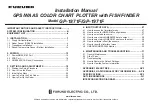
Chapter 1
Introduction
NI PCIe-1433 User Manual and Specifications
1-2
ni.com
such as data acquisition and motion control devices. The RTSI bus uses the
National Instrument RTSI bus interface and ribbon cable to route additional
timing and trigger signals between the NI 1433 and up to four National
Instruments DAQ, Motion Control, or Vision devices. The RTSI bus also
can synchronize multiple image acquisition devices to perform
simultaneous captures.
Refer to Appendix A,
for detailed specifications of the
NI 1433.
Camera Link
This section provides a brief overview of the Camera Link standard. Refer
to the
Specifications of the Camera Link Interface Standard for Digital
Cameras and Frame Grabbers
manual for more detailed information about
Camera Link specifications. This manual is available on several Web sites,
including the Automated Imaging Association site at
www.machinevisiononline.org
.
Overview
Developed by a consortium of camera and image acquisition device
manufacturers, Camera Link is a standard for interfacing digital cameras
with image acquisition devices. Camera Link simplifies connectivity
between the image acquisition device and the camera by defining a single
standard connector for both. This standard ensures physical compatibility
of devices bearing the Camera Link logo.
The basis for the Camera Link standard is the National Semiconductor
Channel Link chipset, a data transmission method consisting of a
general-purpose transmitter/receiver pair. The Channel Link driver takes
28 bits of parallel digital data and a clock and serializes the stream to
four LVDS (EIA-644) data streams and an LVDS clock, providing
high-speed data transmission across 10 wires and over distances of
up to 10 m.
Power Over Camera Link
The NI 1433 supports Power over Camera Link (PoCL). PoCL is an
extension to the Camera Link standard that allows frame grabbers to power
cameras through the Camera Link cable. PoCL uses standard Camera Link
connectors and is backwards compatible with existing Camera Link
equipment.










































